Dianne Bates's Blog, page 12
April 8, 2014
THE LEGEND OF THE THREE MOONS
THE LEGEND OF THE THREE MOONS by Patricia Bernard (Clan Destine)
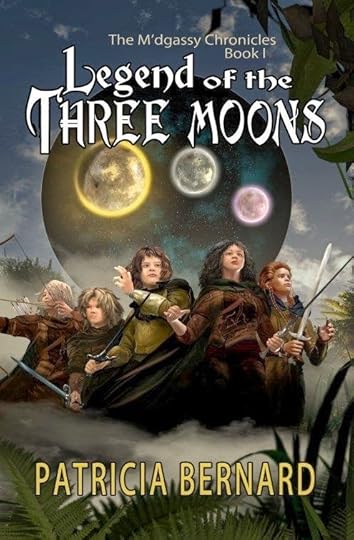
Patricia, how did The Legend of the Three Moons come into being?
I was worried about my grandchildren spending so much time indoors, watching TV, playing computer games and doing homework so I took the five of them to Centennial Park, where after handing them a stick to become any weapon they liked, I told them the park was a forest that changed daily and that they could not leave and that to complicate everything they had a 24 hour memory.
I also gave them the choice of one magical gift each left to them by their royal parents who had been kidnapped and shape-changed by the High Enchanter when their beautiful aunt had refused his hand in marriage, as had been promised to him by their grandparents the Old King and Queen of M’dgassy.
We played in the park the rest of the day adding more and more characters such as Hannah the Hangwoman, Jessup the six fingered shape-stealer of Belem, and San Jaagin the birdman.
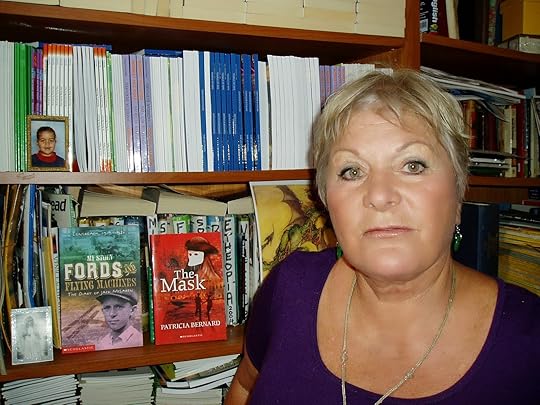 Australian author, Patricia Bernard
Australian author, Patricia BernardBy the time we went home I had the beginning of The Legend of the Three Moons, a teenage quest adventure which has blossomed into The Night Parrot Boy and its sequel, The Gates of Doom.
The book can be purchased from the publisher and from good bookshops where they can be ordered, such as Dymocks of Bondi Junction, Beecroft Children’s bookshop and Bloomin Books Caringbah. Distributed by ABC (Australian Book Group)
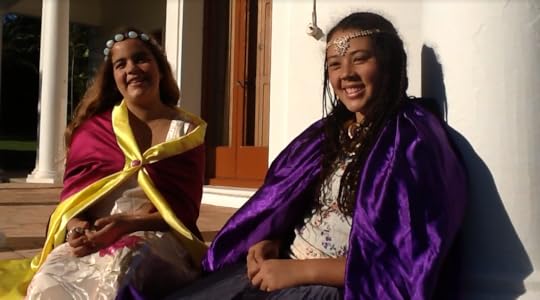 Celeste and Layla who helped with the creation of The Legend of
Celeste and Layla who helped with the creation of The Legend ofthe Three Moons in Centennial Park, Sydney.
Check out the book at htpp://wwwthreemoons.com.au, where you will also find teachers’ notes.
Published on April 08, 2014 21:45
April 6, 2014
Where is the Illustrator?
There are many reasons why picture book authors are not successful in getting their manuscripts accepted by publishers. Often the main problem is that they did not give sufficient thought to the role of illustrator as co-creator of the finished book; unsuccessful writers give too much pictorial description that can be shown through illustration.
A writer needs to read her text with the eye of an illustrator, looking at each and every paragraph to consider what pictorial images might complement them. If she cannot imagine illustrations for each paragraph, then she can be said to have failed the illustrator ‘test’, and so she must re-write. Laura Harris, Publishing Manager Penguin Books says, ‘One of the main reasons picture book texts get rejected is that the writer doesn’t give the illustrator enough to work with.’
Successful picture book authors show they have an understanding of the value of every word in the picture book text and the huge importance of the role of the illustrator as the book’s co-creator.
Here’s what other publishers and illustrators have to say with regard to the use of illustrations in picture books
Elaine Ousten, publisher, Morris Publishing Australia: I advise picture book authors to do a storyboard to help them decide which part of the story needs to be in words, and which part of the story will be told by the illustrations. For instance; it is not necessary for the words to say, ‘John got a huge, red ball for his birthday. He loved it.’ The picture will show that the ball is huge and red. All the words need to say is, ‘John loved the ball he got for his birthday.’ The best picture books are the ones written and illustrated by the same person, because they understand how to let the illustration tell a part of the story.
Paul Collins, publisher Ford Street Publishing: Picture book authors need to leave room for their collaborator: the illustrator! Illustrators show colours and much more, so authors’ descriptions needn't be so detailed. The best picture books are those where the author and illustrator are perfectly in synch.
Ann James, illustrator: To write a picture book the writer knows less is more, but that each word is potent and a cue for interpretation by the artist.
Shaun Tan, illustrator: I accept manuscripts ... that give much room for me to play and to tell my own stories visually, (that have) a certain ambiguity . . . that resist being fully explained.”
Ron Brooks, illustrator: To make a picture book, the words have to turn my heart around, make me go hollow in the belly, weak at the knees.”
Lesley Vamos, illustrator: Picture book authors should understand that as illustrators we are there to capture the vision of the world you've created. It is our job to infuse the text with the knowledge and skills we have gleamed from years of practice so when push comes to shove there needs to be room for us to do our job. I like it when picture book authors are enthusiastic, collaborative and know when to give their illustrators space. The best picture books don't talk down; they tell a great story with illustrations that visualise a world and inspire and enthuse a child's imagination!
Jill Carter-Hansen, illustrator: I like it when picture book authors acknowledge the contribution of research, preparation and work hours that is the in-put of the illustrator. The most thoughtful illustrators usually create clues and side plots to enliven the text and give added meaning and visual interest for both the child and adult reader. This genre is not called a 'picture' book for nothing. However, often in reviews, illustrations are mentioned at the close of the article as a kind of afterthought, with what appears to be a lack of understanding as to the amount of time and consideration that most engaging illustration work requires.
Kerry Millard, illustrator: I like a text to move minimally so that I can visually create extra layers and stories.The best picture books take best advantage of the imagination and skills of author and illustrator (and editor and designer) resulting in a whole which is true to the story and intent in every aspect, and at the same time is delighting in the seamless harmony of the variety of approaches through which the creators have interpreted and represented the text.
The work is a pas de deux which is elevated when author and illustrator are both able to create to their fullest potential while respecting and interpreting the core. The less restrictive the choreography, the more room there is for the talent of the creators.
In summary, the best picture books are created by authors who know the illustrator will work their magic; the successful author uses the few words which they have distilled to convey rich and essential story elements and to creatively set up space and timing for equally rich possibilities in the visual elements.
© Dianne Bateswww.enterprisingwords.com.au
A writer needs to read her text with the eye of an illustrator, looking at each and every paragraph to consider what pictorial images might complement them. If she cannot imagine illustrations for each paragraph, then she can be said to have failed the illustrator ‘test’, and so she must re-write. Laura Harris, Publishing Manager Penguin Books says, ‘One of the main reasons picture book texts get rejected is that the writer doesn’t give the illustrator enough to work with.’
Successful picture book authors show they have an understanding of the value of every word in the picture book text and the huge importance of the role of the illustrator as the book’s co-creator.
Here’s what other publishers and illustrators have to say with regard to the use of illustrations in picture books
Elaine Ousten, publisher, Morris Publishing Australia: I advise picture book authors to do a storyboard to help them decide which part of the story needs to be in words, and which part of the story will be told by the illustrations. For instance; it is not necessary for the words to say, ‘John got a huge, red ball for his birthday. He loved it.’ The picture will show that the ball is huge and red. All the words need to say is, ‘John loved the ball he got for his birthday.’ The best picture books are the ones written and illustrated by the same person, because they understand how to let the illustration tell a part of the story.
Paul Collins, publisher Ford Street Publishing: Picture book authors need to leave room for their collaborator: the illustrator! Illustrators show colours and much more, so authors’ descriptions needn't be so detailed. The best picture books are those where the author and illustrator are perfectly in synch.
Ann James, illustrator: To write a picture book the writer knows less is more, but that each word is potent and a cue for interpretation by the artist.
Shaun Tan, illustrator: I accept manuscripts ... that give much room for me to play and to tell my own stories visually, (that have) a certain ambiguity . . . that resist being fully explained.”
Ron Brooks, illustrator: To make a picture book, the words have to turn my heart around, make me go hollow in the belly, weak at the knees.”
Lesley Vamos, illustrator: Picture book authors should understand that as illustrators we are there to capture the vision of the world you've created. It is our job to infuse the text with the knowledge and skills we have gleamed from years of practice so when push comes to shove there needs to be room for us to do our job. I like it when picture book authors are enthusiastic, collaborative and know when to give their illustrators space. The best picture books don't talk down; they tell a great story with illustrations that visualise a world and inspire and enthuse a child's imagination!
Jill Carter-Hansen, illustrator: I like it when picture book authors acknowledge the contribution of research, preparation and work hours that is the in-put of the illustrator. The most thoughtful illustrators usually create clues and side plots to enliven the text and give added meaning and visual interest for both the child and adult reader. This genre is not called a 'picture' book for nothing. However, often in reviews, illustrations are mentioned at the close of the article as a kind of afterthought, with what appears to be a lack of understanding as to the amount of time and consideration that most engaging illustration work requires.
Kerry Millard, illustrator: I like a text to move minimally so that I can visually create extra layers and stories.The best picture books take best advantage of the imagination and skills of author and illustrator (and editor and designer) resulting in a whole which is true to the story and intent in every aspect, and at the same time is delighting in the seamless harmony of the variety of approaches through which the creators have interpreted and represented the text.
The work is a pas de deux which is elevated when author and illustrator are both able to create to their fullest potential while respecting and interpreting the core. The less restrictive the choreography, the more room there is for the talent of the creators.
In summary, the best picture books are created by authors who know the illustrator will work their magic; the successful author uses the few words which they have distilled to convey rich and essential story elements and to creatively set up space and timing for equally rich possibilities in the visual elements.
© Dianne Bateswww.enterprisingwords.com.au
Published on April 06, 2014 14:19
April 5, 2014
ROBERT FAVRETTO – On The Nose
A review by Dianne (Di) Bates
On the Noseby Robert Favretto (Morris Publishing Australia, 2014)
There are two things one immediately notice about this junior novel for readers aged 9 to 12 years: the striking, colourful cover (by Kevin Burgemeestre) and the fact that it is skinny (38 pages).
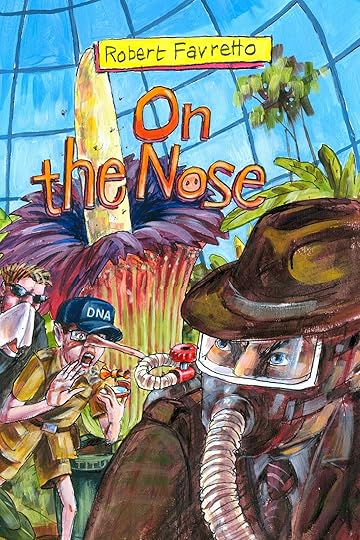 Most kids – particularly reluctant readers -- love skinny books, and they love books like this which play around with words. There’s no doubt that Favretto, a primary school teacher, had much fun writing this book for it is full of wordplay and puns. Many of the character’s names are contrived to elicit a grin, such as Barry Mundi, Willy Wynn, Stella Mozzarella and Len D’Hand.
Most kids – particularly reluctant readers -- love skinny books, and they love books like this which play around with words. There’s no doubt that Favretto, a primary school teacher, had much fun writing this book for it is full of wordplay and puns. Many of the character’s names are contrived to elicit a grin, such as Barry Mundi, Willy Wynn, Stella Mozzarella and Len D’Hand.
Justin Credible is a boy wonder – his genius being that he can sniff a smell at a hundred paces. His nose can easily detect all of the smells that comprise, say, a pizza. So it’s no wonder that the Department of Nasal Affairs (DNA) trains him as a super sleuth to crack smelly cases.
On the Noseis full of absurd situations. Here is one example: ‘... when Justin blew his nose, it sounded like the blast of an ocean liner’s foghorn! The powerful vibration spread through the group like the swift-moving rumble of an earthquake. It bowled everyone over like tenpins.’
Puns include ‘he felt as miserable as a long-nose bandicoot’ and ‘he promised to keep his nose to the grindstone.’
Favretto doesn’t miss an opportunity to play up the nose situation. During Justin’s training, he has the boy sniffing out bones of prehistoric mammals, nose-vaulting, studying aromatherapy and odourology. His first official task is to track down the person who has stolen a skunk from the zoo. The success of this adventure leads to Justin’s employment by the city’s mayor when someone drops a stink bomb in the city of Aroma that creates all kinds of mayhem and the city is ‘in grave danger of ex-stink-tion.’
The smelliest smell Justin has ever encountered leads him to the source of the stink and the perpetrator of the crime. How he overcomes them concludes this pun-filled adventure novel.

About the authorRobert is a primary school teacher and Victorian based writer of children’s fiction. His previous publishing credits include CAT-astrophe(Morris Publishing Australia), Leonardo’s Spot of Trouble (Blake Education) and Lost for Words (Limelight Press).
He has also had his short story The Cuckoo Clockpublished in the CHARMS anthology. Robert has completed a Diploma of Professional Children’s Writing and has presented writing workshops for primary school aged children and the Mornington Peninsula Libraries.
As part of the blog tour, we will give away a copy of ‘ On The Nose’. To be in the draw, simply comment on the post and send an email of your comment to submissions@morrispublishingaustralia.com with the subject "On The Nose competition". Competition closes midnight EDST 15th April 2014.
On The Nose (Morris Publishing Australia) PB RRP $13.95
ISBN: 978-0-9875434-7-9
http://morrispublishingaustralia.com
Synopsis:Justin Credible is a real live Pinocchio with a keen sense of smell. Trained as a super sleuth for the DNA (Department of Nasal Affairs), he is often called upon at the first sniff of trouble. With a nose for those hard to crack smelly cases, it's no surprise when Justin responds to an urgent call for help. Someone or something has dropped a stink bomb in the city of Aroma – and the stench is devastating! Gardens are wilting, birds are dropping out of the sky, and the residents are leaving in droves!
With sleuth-like determination, Justin follows his nose to solve the mystery of the phantom smell before it wipes Aroma off the map!
ABOUT THE BOOK: On the Nose is a fun and entertaining read that is sure to be enjoyed by young boys. This story is along the same lines as the Just books and Captain Underpants series: crazy, funny, and really silly – everything a young boy loves in a book.
Join us for reviews and more interesting facts about Robert and the book as you follow the tour.
April 1st www.kids-bookreview.com Review April 2nd www.buzzwordsmagazine.com Interview April 3rd http://writingclassesforkids.com. Writing tips for kids April 4th elaineoustonauthor.com Interview April 5th http://clancytucker.blogspot.com.au Interview April 6th http://diannedibates.blogspot.com.au Review April 7th www.melissawray.blogspot.com.au Review April 8th http://www.morrispublishingaustralia.com Interview
On the Noseby Robert Favretto (Morris Publishing Australia, 2014)
There are two things one immediately notice about this junior novel for readers aged 9 to 12 years: the striking, colourful cover (by Kevin Burgemeestre) and the fact that it is skinny (38 pages).
 Most kids – particularly reluctant readers -- love skinny books, and they love books like this which play around with words. There’s no doubt that Favretto, a primary school teacher, had much fun writing this book for it is full of wordplay and puns. Many of the character’s names are contrived to elicit a grin, such as Barry Mundi, Willy Wynn, Stella Mozzarella and Len D’Hand.
Most kids – particularly reluctant readers -- love skinny books, and they love books like this which play around with words. There’s no doubt that Favretto, a primary school teacher, had much fun writing this book for it is full of wordplay and puns. Many of the character’s names are contrived to elicit a grin, such as Barry Mundi, Willy Wynn, Stella Mozzarella and Len D’Hand. Justin Credible is a boy wonder – his genius being that he can sniff a smell at a hundred paces. His nose can easily detect all of the smells that comprise, say, a pizza. So it’s no wonder that the Department of Nasal Affairs (DNA) trains him as a super sleuth to crack smelly cases.
On the Noseis full of absurd situations. Here is one example: ‘... when Justin blew his nose, it sounded like the blast of an ocean liner’s foghorn! The powerful vibration spread through the group like the swift-moving rumble of an earthquake. It bowled everyone over like tenpins.’
Puns include ‘he felt as miserable as a long-nose bandicoot’ and ‘he promised to keep his nose to the grindstone.’
Favretto doesn’t miss an opportunity to play up the nose situation. During Justin’s training, he has the boy sniffing out bones of prehistoric mammals, nose-vaulting, studying aromatherapy and odourology. His first official task is to track down the person who has stolen a skunk from the zoo. The success of this adventure leads to Justin’s employment by the city’s mayor when someone drops a stink bomb in the city of Aroma that creates all kinds of mayhem and the city is ‘in grave danger of ex-stink-tion.’
The smelliest smell Justin has ever encountered leads him to the source of the stink and the perpetrator of the crime. How he overcomes them concludes this pun-filled adventure novel.

About the authorRobert is a primary school teacher and Victorian based writer of children’s fiction. His previous publishing credits include CAT-astrophe(Morris Publishing Australia), Leonardo’s Spot of Trouble (Blake Education) and Lost for Words (Limelight Press).
He has also had his short story The Cuckoo Clockpublished in the CHARMS anthology. Robert has completed a Diploma of Professional Children’s Writing and has presented writing workshops for primary school aged children and the Mornington Peninsula Libraries.
As part of the blog tour, we will give away a copy of ‘ On The Nose’. To be in the draw, simply comment on the post and send an email of your comment to submissions@morrispublishingaustralia.com with the subject "On The Nose competition". Competition closes midnight EDST 15th April 2014.
On The Nose (Morris Publishing Australia) PB RRP $13.95
ISBN: 978-0-9875434-7-9
http://morrispublishingaustralia.com
Synopsis:Justin Credible is a real live Pinocchio with a keen sense of smell. Trained as a super sleuth for the DNA (Department of Nasal Affairs), he is often called upon at the first sniff of trouble. With a nose for those hard to crack smelly cases, it's no surprise when Justin responds to an urgent call for help. Someone or something has dropped a stink bomb in the city of Aroma – and the stench is devastating! Gardens are wilting, birds are dropping out of the sky, and the residents are leaving in droves!
With sleuth-like determination, Justin follows his nose to solve the mystery of the phantom smell before it wipes Aroma off the map!
ABOUT THE BOOK: On the Nose is a fun and entertaining read that is sure to be enjoyed by young boys. This story is along the same lines as the Just books and Captain Underpants series: crazy, funny, and really silly – everything a young boy loves in a book.
Join us for reviews and more interesting facts about Robert and the book as you follow the tour.
April 1st www.kids-bookreview.com Review April 2nd www.buzzwordsmagazine.com Interview April 3rd http://writingclassesforkids.com. Writing tips for kids April 4th elaineoustonauthor.com Interview April 5th http://clancytucker.blogspot.com.au Interview April 6th http://diannedibates.blogspot.com.au Review April 7th www.melissawray.blogspot.com.au Review April 8th http://www.morrispublishingaustralia.com Interview
Published on April 05, 2014 14:40
March 28, 2014
The Ugg Boot War by Kylie Fornasier
Kylie Fornasier
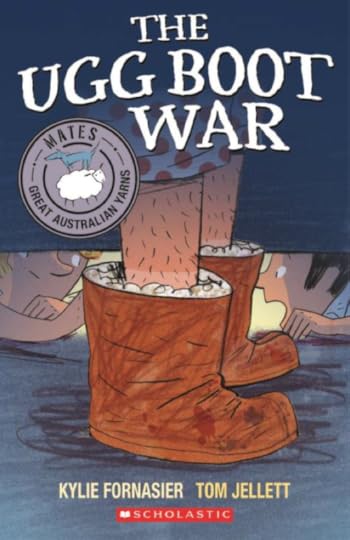 Jake’s father is an embarrassment to Jake. He wears his old, stained, and (in Jake’s opinion) ugly ugg boots everywhere. Winter or summer, home or out in public, they are on his feet. Jake is determined that this needs to stop: he cannot handle the embarrassment of having a father in ugg boots any longer. Despite his best friend’s misgivings, and his mother’s warnings about trying to change people, Jake embarks on a daring plan to remove the ugg boots from his father’s life. Jake’s father, however, is unaware of the problem his beloved boots are causing, and the final outcome of Jake’s ugg boot war surprises even Jake.
Jake’s father is an embarrassment to Jake. He wears his old, stained, and (in Jake’s opinion) ugly ugg boots everywhere. Winter or summer, home or out in public, they are on his feet. Jake is determined that this needs to stop: he cannot handle the embarrassment of having a father in ugg boots any longer. Despite his best friend’s misgivings, and his mother’s warnings about trying to change people, Jake embarks on a daring plan to remove the ugg boots from his father’s life. Jake’s father, however, is unaware of the problem his beloved boots are causing, and the final outcome of Jake’s ugg boot war surprises even Jake.
I wrote The Ugg Boot War because I wanted to write about something uniquely Australian, and what’s more Australian than ugg boots? Like Jake’s dad, my own dad loves his ugg boots, but that’s where the similarities end, even if my dad doesn’t believe it. Since writing this book, I’ve realized just how much I wear my own ugg boots (but only at home). In fact, I’m wearing them as I write this!
Kylie, when do you write?
I try to write every day, but that doesn’t always happen, in fact, it doesn’t even happen even half the time. If I can’t write everyday, I try to at least do something related to writing, whether that’s research, promotion, daydreaming about my story or simply reading something wonderful.
Where do you write?
I have a writing desk in my bedroom, but I rarely sit there to write. It’s more of my go-to desk for my writing supplies. Since I write on my laptop, I can write anywhere. I love sitting on the porch to write in the morning sun. And I am guilty of writing in front of the TV, quite a lot.
What can’t you write without?
My ugg boots, most of the year! A cup of tea and a piece of dark chocolate also helps. Post-it notes, in all colours, are another must.
What’s next for you?
I have a young adult novel being released by Penguin Books in July, titled Masquerade. It’s Gossip Girl meets Shakespeare set in 18th century Venice. I’m very excited about it. I also have a picture book being released by Koala Books/Scholastic in November, tilted The Prince who Shrank. And as always, I’m writing, writing, writing.
Where to buy The Ugg Boot War:
http://www.booktopia.com.au/the-ugg-boot-war-kylie-fornasier/prod9781862919990.html
http://www.fishpond.com.au/Books/Ugg-Boot-War-Mates-Kylie-Fornasier-Tom-Jellett-Illustrated-by/9781862919990
http://www.dymocks.com.au/ProductDetails/ProductDetail.aspx?R=9781862919990#.UygXOxYWR1M
The Ugg Boot War by Kylie Fornasier, Publisher: Omnibus Books an imprint of Scholastic was published in the Mates: Great Australian Yarns series. Illustrator: Tom Jellett. Publication date: 1st March 2014
 Jake’s father is an embarrassment to Jake. He wears his old, stained, and (in Jake’s opinion) ugly ugg boots everywhere. Winter or summer, home or out in public, they are on his feet. Jake is determined that this needs to stop: he cannot handle the embarrassment of having a father in ugg boots any longer. Despite his best friend’s misgivings, and his mother’s warnings about trying to change people, Jake embarks on a daring plan to remove the ugg boots from his father’s life. Jake’s father, however, is unaware of the problem his beloved boots are causing, and the final outcome of Jake’s ugg boot war surprises even Jake.
Jake’s father is an embarrassment to Jake. He wears his old, stained, and (in Jake’s opinion) ugly ugg boots everywhere. Winter or summer, home or out in public, they are on his feet. Jake is determined that this needs to stop: he cannot handle the embarrassment of having a father in ugg boots any longer. Despite his best friend’s misgivings, and his mother’s warnings about trying to change people, Jake embarks on a daring plan to remove the ugg boots from his father’s life. Jake’s father, however, is unaware of the problem his beloved boots are causing, and the final outcome of Jake’s ugg boot war surprises even Jake.I wrote The Ugg Boot War because I wanted to write about something uniquely Australian, and what’s more Australian than ugg boots? Like Jake’s dad, my own dad loves his ugg boots, but that’s where the similarities end, even if my dad doesn’t believe it. Since writing this book, I’ve realized just how much I wear my own ugg boots (but only at home). In fact, I’m wearing them as I write this!
Kylie, when do you write?
I try to write every day, but that doesn’t always happen, in fact, it doesn’t even happen even half the time. If I can’t write everyday, I try to at least do something related to writing, whether that’s research, promotion, daydreaming about my story or simply reading something wonderful.
Where do you write?
I have a writing desk in my bedroom, but I rarely sit there to write. It’s more of my go-to desk for my writing supplies. Since I write on my laptop, I can write anywhere. I love sitting on the porch to write in the morning sun. And I am guilty of writing in front of the TV, quite a lot.
What can’t you write without?
My ugg boots, most of the year! A cup of tea and a piece of dark chocolate also helps. Post-it notes, in all colours, are another must.
What’s next for you?
I have a young adult novel being released by Penguin Books in July, titled Masquerade. It’s Gossip Girl meets Shakespeare set in 18th century Venice. I’m very excited about it. I also have a picture book being released by Koala Books/Scholastic in November, tilted The Prince who Shrank. And as always, I’m writing, writing, writing.
Where to buy The Ugg Boot War:
http://www.booktopia.com.au/the-ugg-boot-war-kylie-fornasier/prod9781862919990.html
http://www.fishpond.com.au/Books/Ugg-Boot-War-Mates-Kylie-Fornasier-Tom-Jellett-Illustrated-by/9781862919990
http://www.dymocks.com.au/ProductDetails/ProductDetail.aspx?R=9781862919990#.UygXOxYWR1M
The Ugg Boot War by Kylie Fornasier, Publisher: Omnibus Books an imprint of Scholastic was published in the Mates: Great Australian Yarns series. Illustrator: Tom Jellett. Publication date: 1st March 2014
Published on March 28, 2014 22:39
March 24, 2014
BLENDING FANTASY WITH SCIENCE FICTION & EVEN THE CLASSICS
© Goldie Alexander
Of the many genres aimed at young readers, fantasy has proven to be extraordinarily popular and an ‘awesome’ number have appeared on our shelves. All fantasy has certain common elements: they must take place in a consistent, if imaginary world. Their major theme, much like the fairy story, is good versus evil, with good eventually winning out against what seems like insurmountable odds. The reader is asked to suspend disbelief with a completeness that is not required in more traditional genres.
If the best fantasy is written with flair and imagination, it can also be used as metaphor, such as coping with climate warming, protecting the environment, ensuring endangered animals survive, overcoming totalitarian rule. They all offer the hope that everything can and will, turn out for the best.
‘eSide: A Journey Through Cyberspace’, has gone through several metamorphosis. Originally a long short story for my collection ‘My Horrible Cousins and Other Stories’ and called ‘The Great Google’, I extended the idea into a five part novel that would hopefully help more reluctant readers tackle what would otherwise be a big project, and feel a sense of achievement. Because this story blends fantasy, science fiction and reality, I had hoped that it was different enough to make it stand out from the usual Tolkien style novel.
I already had one of my favourite characters in place, the magician tGF, favourite because he commands dishes to wash themselves, towels to hang themselves on a line, and manage lots of other household tasks with just a twitch of his fingers. I liked the idea of placing fantasy inside a recognisable setting, and the small, friendly Conch Café where some of the action takes place is similar to many cafes in my home city of Melbourne.
Sam and her single mother Kate live in the rear of the Conch Café, close to Sam’s best friend Melody and her dog, Billy. The building is owned by greedy witch Hecate Badminton who will do anything to own the café’s Good-Luck-Conch that she believes will give her immortality. After Hecate steals the shell and the café burns down, the girls have a series of remarkable adventures inside the wicked witch Hecate’s mainframe computer or in ‘eSide’ as they are pulled into a totalitarian digital world. Because computer graphics create unique scenarios, the girls must travel through new and dangerous worlds to overcome some of their worst fears before they can recover their conch and return home.
“Neptunia”Lost in an unknown ocean, Cassie’s plasticine figures come to life when a wrathful Mer-King Neptune holds Cassie responsible for the damage humans are inflicting on his oceans. Athena, a telepathic turtle, informs Cassie that before she reaches Neptunia, the Mer-King will do everything in his power to exact his revenge and that she must undergo three dangerous trails before he will listen to her message. However, Cassie manages to use ‘strength, strategy and spirit’ to conquer the dangerous One-Eyed Octopus, the wily Enchantress, and the fearsome Boil and Bubble. Between adventures, the story pictures her life back home.
Both novels are aimed at upper primary readers. Teacher Notes are on my website. www.goldiealexander.com
“eSide: A Journey through Cyberspace” and “Neptunia” are both published by www.fivesenses.com.au
“eSide” for $16.95. “Neptunia” for $14.95
Of the many genres aimed at young readers, fantasy has proven to be extraordinarily popular and an ‘awesome’ number have appeared on our shelves. All fantasy has certain common elements: they must take place in a consistent, if imaginary world. Their major theme, much like the fairy story, is good versus evil, with good eventually winning out against what seems like insurmountable odds. The reader is asked to suspend disbelief with a completeness that is not required in more traditional genres.
If the best fantasy is written with flair and imagination, it can also be used as metaphor, such as coping with climate warming, protecting the environment, ensuring endangered animals survive, overcoming totalitarian rule. They all offer the hope that everything can and will, turn out for the best.
‘eSide: A Journey Through Cyberspace’, has gone through several metamorphosis. Originally a long short story for my collection ‘My Horrible Cousins and Other Stories’ and called ‘The Great Google’, I extended the idea into a five part novel that would hopefully help more reluctant readers tackle what would otherwise be a big project, and feel a sense of achievement. Because this story blends fantasy, science fiction and reality, I had hoped that it was different enough to make it stand out from the usual Tolkien style novel.
I already had one of my favourite characters in place, the magician tGF, favourite because he commands dishes to wash themselves, towels to hang themselves on a line, and manage lots of other household tasks with just a twitch of his fingers. I liked the idea of placing fantasy inside a recognisable setting, and the small, friendly Conch Café where some of the action takes place is similar to many cafes in my home city of Melbourne.
Sam and her single mother Kate live in the rear of the Conch Café, close to Sam’s best friend Melody and her dog, Billy. The building is owned by greedy witch Hecate Badminton who will do anything to own the café’s Good-Luck-Conch that she believes will give her immortality. After Hecate steals the shell and the café burns down, the girls have a series of remarkable adventures inside the wicked witch Hecate’s mainframe computer or in ‘eSide’ as they are pulled into a totalitarian digital world. Because computer graphics create unique scenarios, the girls must travel through new and dangerous worlds to overcome some of their worst fears before they can recover their conch and return home.
“Neptunia”Lost in an unknown ocean, Cassie’s plasticine figures come to life when a wrathful Mer-King Neptune holds Cassie responsible for the damage humans are inflicting on his oceans. Athena, a telepathic turtle, informs Cassie that before she reaches Neptunia, the Mer-King will do everything in his power to exact his revenge and that she must undergo three dangerous trails before he will listen to her message. However, Cassie manages to use ‘strength, strategy and spirit’ to conquer the dangerous One-Eyed Octopus, the wily Enchantress, and the fearsome Boil and Bubble. Between adventures, the story pictures her life back home.
Both novels are aimed at upper primary readers. Teacher Notes are on my website. www.goldiealexander.com
“eSide: A Journey through Cyberspace” and “Neptunia” are both published by www.fivesenses.com.au
“eSide” for $16.95. “Neptunia” for $14.95
Published on March 24, 2014 23:21
March 23, 2014
The Rat Catcher's Daughter
The Rat Catcher’s Daughter by Pamela Rushby (HarperCollins, 1 April 2014)
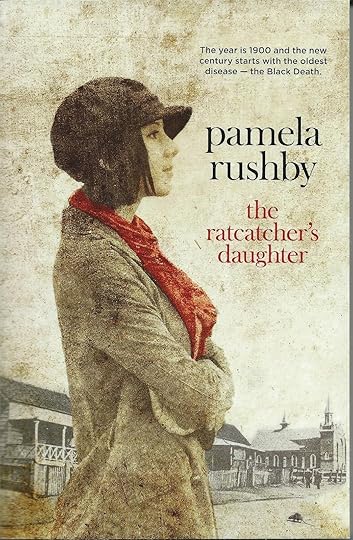 The year is 1900 and the new century starts with the oldest disease – the Black Death. Thirteen-year-old Issy McKelvie is forced to leave school to start her first job as a maid in an undertaking establishment. Issy’s entire family is now working and because her father’s job on the wharves is unreliable, he also works with his dogs as a rat catcher.
The year is 1900 and the new century starts with the oldest disease – the Black Death. Thirteen-year-old Issy McKelvie is forced to leave school to start her first job as a maid in an undertaking establishment. Issy’s entire family is now working and because her father’s job on the wharves is unreliable, he also works with his dogs as a rat catcher.In 1900 the plague – the Black Death – arrives in Australia, spread by the fleas on rats. As the disease starts to take its human toll, panic grows. The rats must be exterminated.
Issy loathes both rats and her father’s pack of yappy, snappy, rat-killing terriers. But when her father becomes ill, Issy must join the battle to rid the city of the plague-carrying rats.
However, many things about the city’s control of the plague are not as they seem. As she discovers and pieces together various clues, Issy comes to realise that the real world is very different from the one she thought she knew.
From the author of the award-winning The Horses Didn’t Come Home, this is a fascinating story about a little-known event in Australia’s history.
“A brilliant and richly evocative insight into a fascinating and little-known aspect of our past” Jackie French, Australian Children’s Laureate
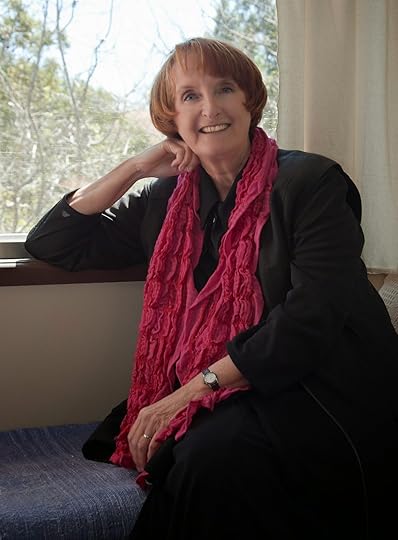
Writing the story by Pamela Rushby
Some time ago, I was at an exhibition at the Museum of Brisbane and I noticed two old photographs: one of men with a pile of dead rats and another of men with packs of rat-killing terriers. The caption said the photographs dated from the plague epidemic of 1900. I had no idea that we had ever had the plague – the Black Death – in Australia. I did some research. And I found an amazing story: people forced into quarantine, a street barricaded off, the dead bundled into coffins packed with quicklime and taken down river to be buried on a remote mangrove island, accusations from the press and public of government bungling and failure to be prepared, rumours of the wealthy and influential bypassing the regulations, racism and panic in the streets. Quite a story! Who wouldn’t want to write about it?
Pamela Rushby
P.Rushby@internode.on.net
www.pamelarushby.com
Other books by Pamela Rushby
When the Hipchicks Went to War (Hachette 2009) Notable Book CBCA Awards 2010,
Winner Ethel Turner Prize NSW Premier's Literary Awards 2010
The Horses Didn't Come Home(HarperCollins 2012), Short-listed Queensland Literary Awards 2012. Notable Book CBCA awards 2013
Flora's War (Ford St Publishing 2013)
Published on March 23, 2014 14:17
March 11, 2014
The Gestation of Convict Jack
© Jill Blee
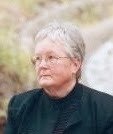 It was not until my children started primary school that I realised how little I knew of the history of this country. What history I had done during my school days was British with an Irish slant provided by the Mercy sisters who taught me.
It was not until my children started primary school that I realised how little I knew of the history of this country. What history I had done during my school days was British with an Irish slant provided by the Mercy sisters who taught me.
We had moved to Sydney where the convict history of Australia speaks out loudly from the sandstone buildings just before the children started school. As Gough Whitlam had made tertiary education free about the same time, the opportunity to rectify the flaws in my education was there for the taking. And I took it.
While I soaked up everything I could about the establishment of the convict colony of New South Wales, I was disappointed with the quality of material available on the subject for young readers. It was not until the mid nineties that I had the time and the head space to do anything about it, but I decided to tell the journey of the First Fleet through the eyes of a young convict.
My first attempt called Me Name’s Jackwas far too wordy, had too many characters, and too much information about the issues surrounding the bizarre decision of the British Government to ship 750 convicts plus marines and navel personnel to a spot on a map which only one other group of people had stumbled upon eighteen years previously.
Quite understandably I didn’t find a publisher willing to take the manuscript on. In the meantime, I had embarked on more study and on writing for adults. There novels followed, all with an Irish/ Irish Australian theme, and one also dealing with the more gruesome history of our convict past.
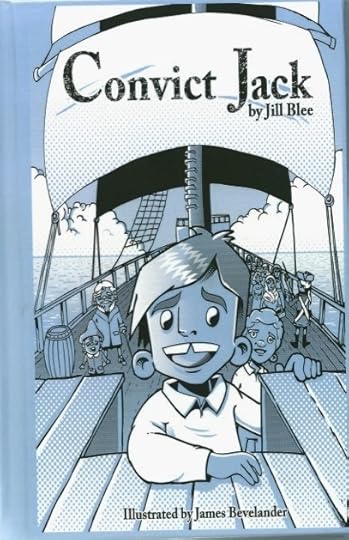 Jack emerged from the bottom drawer where I had consigned him once these novels were published and gone from the creative space in my brain. I read children’s fiction widely to more accurately determine what should be in my story and what could be chopped before I embarked on another draft but before I could finish it, another project loomed. I was commissioned to write a series of histories so Jack was returned to his drawer.
Jack emerged from the bottom drawer where I had consigned him once these novels were published and gone from the creative space in my brain. I read children’s fiction widely to more accurately determine what should be in my story and what could be chopped before I embarked on another draft but before I could finish it, another project loomed. I was commissioned to write a series of histories so Jack was returned to his drawer.
A couple of years ago I decided to do a masterclass series with the well known and many times published Nic Brasch. I got Jack out and started again, trimming and refining slabs of the manuscript to present to the class. Nic loved the finished product and wrote a glowing commendation of it but while I got several letters from publishers which said words like beautifully written, delightful, extremely well researched, they also followed up with less cheerful advice that it would not fit their list, they couldn’t be sure of the market, and other platitudes.
By this time the story had had several name changes. Another writer had published a story called I am Jack. Although it is on a completely different topic, I felt I could no longer use my title so I changed it to Dorrington’s Extraordinary Journey as Jack’s surname is Dorrington. Then I decided it was too complicated so I decided on Transported. Now, at long last, it is going to be published as Convict Jackby Eureka House. It will hopefully make its appearance this month. Details of when and where it will be available will be announced on www.eurekahouse.com.au
 It was not until my children started primary school that I realised how little I knew of the history of this country. What history I had done during my school days was British with an Irish slant provided by the Mercy sisters who taught me.
It was not until my children started primary school that I realised how little I knew of the history of this country. What history I had done during my school days was British with an Irish slant provided by the Mercy sisters who taught me.We had moved to Sydney where the convict history of Australia speaks out loudly from the sandstone buildings just before the children started school. As Gough Whitlam had made tertiary education free about the same time, the opportunity to rectify the flaws in my education was there for the taking. And I took it.
While I soaked up everything I could about the establishment of the convict colony of New South Wales, I was disappointed with the quality of material available on the subject for young readers. It was not until the mid nineties that I had the time and the head space to do anything about it, but I decided to tell the journey of the First Fleet through the eyes of a young convict.
My first attempt called Me Name’s Jackwas far too wordy, had too many characters, and too much information about the issues surrounding the bizarre decision of the British Government to ship 750 convicts plus marines and navel personnel to a spot on a map which only one other group of people had stumbled upon eighteen years previously.
Quite understandably I didn’t find a publisher willing to take the manuscript on. In the meantime, I had embarked on more study and on writing for adults. There novels followed, all with an Irish/ Irish Australian theme, and one also dealing with the more gruesome history of our convict past.
 Jack emerged from the bottom drawer where I had consigned him once these novels were published and gone from the creative space in my brain. I read children’s fiction widely to more accurately determine what should be in my story and what could be chopped before I embarked on another draft but before I could finish it, another project loomed. I was commissioned to write a series of histories so Jack was returned to his drawer.
Jack emerged from the bottom drawer where I had consigned him once these novels were published and gone from the creative space in my brain. I read children’s fiction widely to more accurately determine what should be in my story and what could be chopped before I embarked on another draft but before I could finish it, another project loomed. I was commissioned to write a series of histories so Jack was returned to his drawer.A couple of years ago I decided to do a masterclass series with the well known and many times published Nic Brasch. I got Jack out and started again, trimming and refining slabs of the manuscript to present to the class. Nic loved the finished product and wrote a glowing commendation of it but while I got several letters from publishers which said words like beautifully written, delightful, extremely well researched, they also followed up with less cheerful advice that it would not fit their list, they couldn’t be sure of the market, and other platitudes.
By this time the story had had several name changes. Another writer had published a story called I am Jack. Although it is on a completely different topic, I felt I could no longer use my title so I changed it to Dorrington’s Extraordinary Journey as Jack’s surname is Dorrington. Then I decided it was too complicated so I decided on Transported. Now, at long last, it is going to be published as Convict Jackby Eureka House. It will hopefully make its appearance this month. Details of when and where it will be available will be announced on www.eurekahouse.com.au
Published on March 11, 2014 19:24
March 10, 2014
WHAT INSPIRES THE WRITING OF A BOOK?
At the moment I'm writing a book which started as a conversation with my husband during which I said how I could remember where I was and with whom when I learnt of the death of my adored fifth grade teacher, but I had no memory of what happened subsequently. ‘Why don’t you write about it?’ my husband asked.
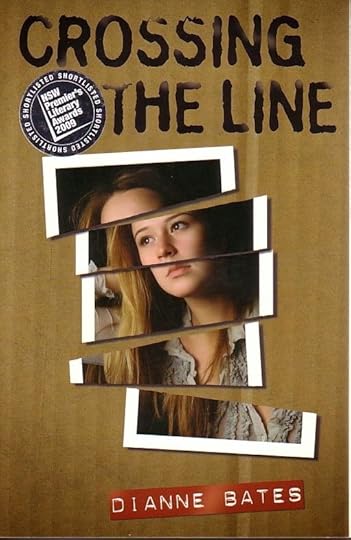
Over the past few years I’ve written several books based on children we fostered, a nine year old boy and girl, both of whose mothers were drug-addicted. And then a book about a family of children put into care when their parents returned to a drug life-style. But it had not occurred to me to write about my young self, raised on a goat and chicken farm, and how I came to learn about death – of animals and of humans.
 [image error]Write about what you know is one of the first tenants of authorship. One knows most about one’s own life so this has been my starting point for the majority of my novels. For example, the starting point for my YA novel, The Last Refuge, was my experience of domestic violence as a child and later as an adult. When I wrote Crossing the Line, about a teenager who self-harms and later finds herself in a psych ward, I was drawing on my own experience as a self-harming teenager and as a bipolar sufferer who had several stints in hospital.
[image error]Write about what you know is one of the first tenants of authorship. One knows most about one’s own life so this has been my starting point for the majority of my novels. For example, the starting point for my YA novel, The Last Refuge, was my experience of domestic violence as a child and later as an adult. When I wrote Crossing the Line, about a teenager who self-harms and later finds herself in a psych ward, I was drawing on my own experience as a self-harming teenager and as a bipolar sufferer who had several stints in hospital.
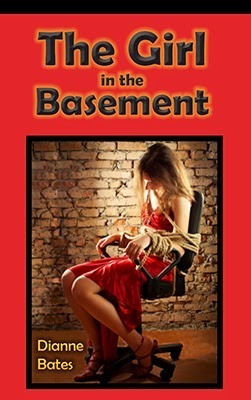 The inspiration for my latest YA novel, The Girl in the Basement (Celapene Press) was a newspaper clipping and photograph. The story told how a Polaroid showing two bound and gagged children – one a teenager, the other a seven-year-old -- had been found in a Florida car park. Both children had been missing for different periods of time. When the photo was shown on national television, the respective parents came forward; this was the first evidence they had of what had happened to their children after they went missing. My curiosity was piqued; who had kidnapped the children and why? What happened to them after the photo was taken? Eventually I created a fictional story about a teenage girl kidnapped by a serial killer who wanted a family of his own.
The inspiration for my latest YA novel, The Girl in the Basement (Celapene Press) was a newspaper clipping and photograph. The story told how a Polaroid showing two bound and gagged children – one a teenager, the other a seven-year-old -- had been found in a Florida car park. Both children had been missing for different periods of time. When the photo was shown on national television, the respective parents came forward; this was the first evidence they had of what had happened to their children after they went missing. My curiosity was piqued; who had kidnapped the children and why? What happened to them after the photo was taken? Eventually I created a fictional story about a teenage girl kidnapped by a serial killer who wanted a family of his own.
I have published over 120 books, mainly for young readers. The inspiration for each of them has been different, though most are the result of my being able to draw on my own experiences and emotions. Who Pushed Humpty? came about after I’d seen graffiti on a wall (Humpty Was Pushed!) The Case of the Kidnapped Brat (co-written with my husband, Bill Condon) was the result of a publishing commission for a mystery novel. The Wild and Wacky Adventurers’ series that I’m currently writing with Bill was initiated when we realised it was far too long since we’d collaborated; we decided on humorous books for 8 to 11 year olds and took it from there. (Read about the creative process of getting started on my blogsite, Writing for Children http://diannedibates.blogspot.com.au/2014/02/writing-junior-book-series.html )
Inspiration is really just another word for getting started. If you don’t get started = you don’t write = you don’t finish writing = you don’t get published.
That’s just about it, folks.
© Dianne Bates

Over the past few years I’ve written several books based on children we fostered, a nine year old boy and girl, both of whose mothers were drug-addicted. And then a book about a family of children put into care when their parents returned to a drug life-style. But it had not occurred to me to write about my young self, raised on a goat and chicken farm, and how I came to learn about death – of animals and of humans.
 [image error]Write about what you know is one of the first tenants of authorship. One knows most about one’s own life so this has been my starting point for the majority of my novels. For example, the starting point for my YA novel, The Last Refuge, was my experience of domestic violence as a child and later as an adult. When I wrote Crossing the Line, about a teenager who self-harms and later finds herself in a psych ward, I was drawing on my own experience as a self-harming teenager and as a bipolar sufferer who had several stints in hospital.
[image error]Write about what you know is one of the first tenants of authorship. One knows most about one’s own life so this has been my starting point for the majority of my novels. For example, the starting point for my YA novel, The Last Refuge, was my experience of domestic violence as a child and later as an adult. When I wrote Crossing the Line, about a teenager who self-harms and later finds herself in a psych ward, I was drawing on my own experience as a self-harming teenager and as a bipolar sufferer who had several stints in hospital. The inspiration for my latest YA novel, The Girl in the Basement (Celapene Press) was a newspaper clipping and photograph. The story told how a Polaroid showing two bound and gagged children – one a teenager, the other a seven-year-old -- had been found in a Florida car park. Both children had been missing for different periods of time. When the photo was shown on national television, the respective parents came forward; this was the first evidence they had of what had happened to their children after they went missing. My curiosity was piqued; who had kidnapped the children and why? What happened to them after the photo was taken? Eventually I created a fictional story about a teenage girl kidnapped by a serial killer who wanted a family of his own.
The inspiration for my latest YA novel, The Girl in the Basement (Celapene Press) was a newspaper clipping and photograph. The story told how a Polaroid showing two bound and gagged children – one a teenager, the other a seven-year-old -- had been found in a Florida car park. Both children had been missing for different periods of time. When the photo was shown on national television, the respective parents came forward; this was the first evidence they had of what had happened to their children after they went missing. My curiosity was piqued; who had kidnapped the children and why? What happened to them after the photo was taken? Eventually I created a fictional story about a teenage girl kidnapped by a serial killer who wanted a family of his own.I have published over 120 books, mainly for young readers. The inspiration for each of them has been different, though most are the result of my being able to draw on my own experiences and emotions. Who Pushed Humpty? came about after I’d seen graffiti on a wall (Humpty Was Pushed!) The Case of the Kidnapped Brat (co-written with my husband, Bill Condon) was the result of a publishing commission for a mystery novel. The Wild and Wacky Adventurers’ series that I’m currently writing with Bill was initiated when we realised it was far too long since we’d collaborated; we decided on humorous books for 8 to 11 year olds and took it from there. (Read about the creative process of getting started on my blogsite, Writing for Children http://diannedibates.blogspot.com.au/2014/02/writing-junior-book-series.html )
Inspiration is really just another word for getting started. If you don’t get started = you don’t write = you don’t finish writing = you don’t get published.
That’s just about it, folks.
© Dianne Bates
Published on March 10, 2014 12:46
March 2, 2014
JOURNAL WRITING
© Marion Lucy
Journal writing can be conducive to professional writing – it can kick start the imagination, bring ideas to the surface and hone writing skills in new ways. I like to experiment with journals and get as creative as I can. Sometimes this means making the books from scratch or creating my own covers for existing books. Journal writing need not be time consuming however, you can keep it simple and just write when and if you feel like it. The main point is that if you find a journaling style you like, it will help to keep you inspired. I have four main styles I use: ranting, ideas, dream recording and creative representations of everyday life.
RantingA ranting book is for writing quickly with little or no conscious thought. You don’t worry about grammar, presentation or what other people will think of it. Personally I use re-cycled exercise books and scrawl over every possible space. It’s messy but the chaos provides a certain level of privacy – I can’t see anyone taking the time to decipher it.
The beauty of a ranting book is that you can ignore you inner critic for awhile which is liberating – it loosens you up and gets the words flowing. Another good thing about automatic writing is that worthwhile ideas sometimes emerge from the sub-conscious – some of which may be useful in your professional work. If this is the case, go over the ideas with a highlighter pen once you’ve finished the entry and write them out separately so they don’t become lost or forgotten.
Another benefit of ranting journals is that they are cathartic. You can write out all your troubles whether they are significant or trivial, leaving you more relaxed and ready to focus on your ‘real’ writing.
Record of ideas
An idea book may relate specifically to a writing project (you might, for example, sketch a stage setting, map a plot, record dialogue or write character profiles) or you may want to be more diverse and record all the ideas that grab you, from a recipe idea to a tree house design. I try and keep idea books neat and as visually appealing as possible so I’m more inclined to turn to them for inspiration. Idea books are good places for lists, mind-maps, fabric scraps, photographs and paint samples. If you’re really keen you can write a contents or index page when you’re finished for easy reference.
The dream journal
Dreams can be a good source of ideas for poetry and fiction, particularly if you tap into their imagery and emotions. If you have trouble remembering your dreams keep a journal or note book by your bed and start writing as soon as you wake up. Aside from writing the dream out as you remember it you may also want to try out different ways of recording them. Here are some ideas: give your dream a title, pinpoint the strongest part, draw a significant image, list the emotions you felt during the dream and reflect on the theme and possible meanings. You might also record whether you have had similar dreams before. If there is a particularly significant image that haunts you from a dream – or you can’t remember anything beyond a single image – try drawing it and give it a caption or a title. You don’t need to be a skilled artist to do this, sometimes a crayon picture drawn roughly and quickly while half awake can capture the essence of an image surprisingly well.
The creative journal
The creative style is all about recording your life in new and interesting ways. This can be helpful in your general writing practise as it pushes you to think imaginatively. Try putting an experience into a poem, record a day as a cartoon-strip, write what you wish you’d said in a certain situation, make a pie-graph of your day or write down the finest details of an event. The possibilities are endless and many of them can help to hone your writing skills. Of all the journal styles this is the kind that lends itself the most to artistic embellishments. Beyond drawing, painting and collage, experiment with the visual appearance of your writing – the style, size and lay-out of your words can make the journal more interesting.
Some other journal types you may want to experiment with are travel and nature journals. As travelling takes us out of our usual routine we can be flooded with new ideas, images and perspectives – and a journal is a good place to capture them. Nature journals enhance observation skills – a definite benefit for writers. You could try drawing or describing insects, shells or fossils in fine detail. You might also chart the moon or tides for a month – or record your observations of your local wildlife.
Experiment in any or every way you like with journaling. Mix many different styles into one book or stick with your favourite. One of the beautiful things about writing in a journal is that if you tap into new approaches and styles that you truly connect with, it will keep you perpetually inspired.
Marion Lucy is a freelance writer of fiction and non-fiction. Many of her children’s pieces have been published by The School Magazine and her first picture book The Giant Bowl of Chocolate was released in 2013. Web: www.marionlucy.com .
Published on March 02, 2014 15:21
February 22, 2014
Things I Wish I Knew As a Beginning Writer
 I was 29 years old and all I’d achieved until then was to become a wife, a mother, and a school teacher. I wanted my life to mean something more so I resolved to write my first (children’s) book and have it published by the time I was 30. I did this and subsequently the book was published by Penguin Books (Puffin imprint). Since then -- I'm now 66 -- I’ve published 120+ books, mostly for young readers some of which have won state and national awards, including children’s choice book awards. Nowadays I make a living from writing.So this advice I give you about what I wish I'd known when I first started writing and getting published:
I was 29 years old and all I’d achieved until then was to become a wife, a mother, and a school teacher. I wanted my life to mean something more so I resolved to write my first (children’s) book and have it published by the time I was 30. I did this and subsequently the book was published by Penguin Books (Puffin imprint). Since then -- I'm now 66 -- I’ve published 120+ books, mostly for young readers some of which have won state and national awards, including children’s choice book awards. Nowadays I make a living from writing.So this advice I give you about what I wish I'd known when I first started writing and getting published:
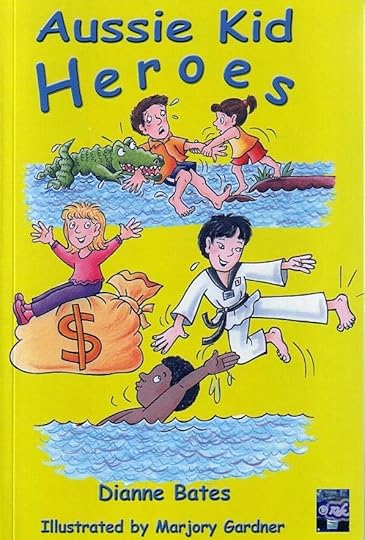
1. Learn the fundamentals of writing before you even attempt a writing career. I cannot stress this enough, even if you feel that writing comes naturally to you, learn grammar and the mechanics of writing. Take classes, attend workshops or read books on your own. You will need to do so eventually and getting it out of the way first will save you much precious time. I was very lucky to have been taught the fundamentals of grammar at high school.
2. Polish, polish and polish. A piece is almost never done after the first draft is complete. The longer you keep a piece of writing, the more mistakes you will see in it. After you have some years of writing under your belt you know when a piece is complete and until it isn’t, the piece nags at you and you can’t stop thinking about it.
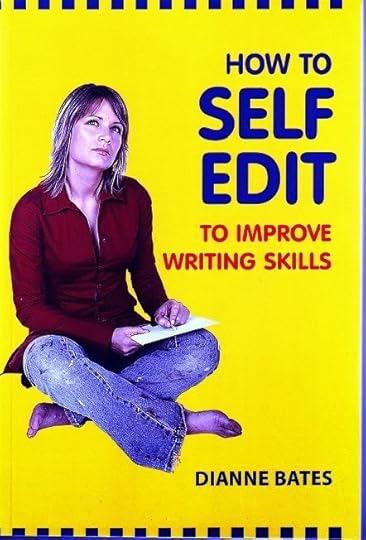
3. Accept feedback from others and pay heed to what they have to say (except those closest to you who love you, hence they will love what you write). For more unbiased feedback post your work on message boards or social media. Writers groups are also helpful. Even after 30+ years of writing, I still workshop my writing-in-progress with other professional writers.
4. Diversify. It’s wise to create multiple revenue streams if you plan to make a comfortable living at writing. If you want to write books also consider seeking freelance writing jobs and/or speaking engagements. Establish yourself as an expert on what you write about.
5. Work to overcome trepidation about public speaking. Many writers are introverts by nature. You need to work to become more outgoing and be ready at any moment to speak enthusiastically about your work. Begin with baby steps and each time you step outside of your comfort zone you will build confidence. You must become your own biggest fan and best salesperson.
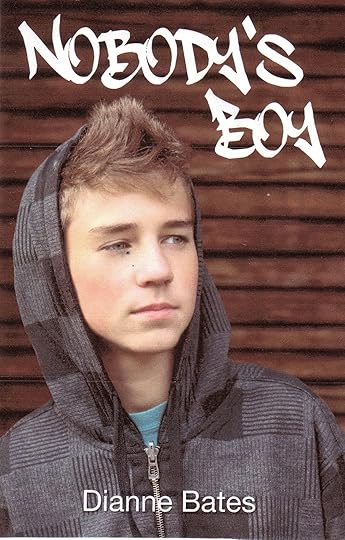 When I first realised the value of speaking publicly about my life as a writer and about specific books I’d written, I joined Toastmasters International and learnt how to train the butterflies in my tummy. There is an incredible amount of competition out there for the attention of readers and it doesn’t matter how good your work is: if it isn’t getting in front of readers it will never get noticed.
When I first realised the value of speaking publicly about my life as a writer and about specific books I’d written, I joined Toastmasters International and learnt how to train the butterflies in my tummy. There is an incredible amount of competition out there for the attention of readers and it doesn’t matter how good your work is: if it isn’t getting in front of readers it will never get noticed.6. A writing career is not easy. It’s very easy to romanticise the writer’s life but most times it is far from glamorous. To be a successful writer requires a mega dose of hard work, commitment, good networking skills, optimism, and also a healthy dose of luck. If you have the discipline to hone your craft, writing can be equally as rewarding as it is often difficult.
7. Beware of any publisher or agent asking you for money from you to do business with you. There are plenty of unscrupulous individuals and companies out there who prey on both the vanity and naiveté of aspiring writers. Thankfully, reviews are now just a click away on the internet. Even if you are self-publishing your work, invest the time in reading online reviews before you sign a contract or upload your work.
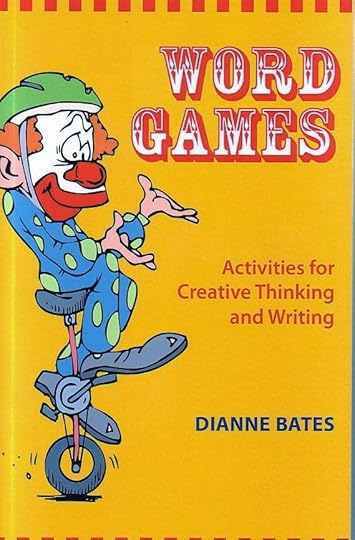 8. Read voraciously. Reading the work of other authors will expand your vocabulary and will make you a better writer. Often when I’m about to write in a particular genre, I will read books in that genre for weeks beforehand; it helps put my head into the right mood.
8. Read voraciously. Reading the work of other authors will expand your vocabulary and will make you a better writer. Often when I’m about to write in a particular genre, I will read books in that genre for weeks beforehand; it helps put my head into the right mood.9. Develop your own unique voice and learn how to spark creativity. Your style is what eventually will set you apart and allow you to develop your niche which will ultimately develop into your fan base.
10. Don’t believe in writer’s block as an excuse not to write. Superglue is the answer (paste it on your backside and get in front of the computer and write!) I’ve learned it’s best to do anything that has nothing to do with writing if you hit a stumbling block, and pretty soon the ideas start flowing freely again.
10. Writing is not only a form of personal expression, it is therapeutic and it is also a lifelong journey of self discovery. If I stop writing I feel there is a huge void within me, life doesn’t seem as fulfilling. Take your craft seriously, create a space to write that is quiet and free from interruptions. Although writers spend lots of time crafting fictional characters, ironically, the act of writing develops the character of the author more than anything else.
11. Get involved in the writing world. Make contact with other writers, if only online. Join the Children’s Book Council of Australia if you are writing for children and become proactive in book events. Accept invitations to speak at festivals and conferences. Help newer writers than you. Get yourself a business card with your contact details on it and hand it out to new writing colleagues and readers.
12. Get yourself a website, a blog and a Facebook page. Be proactive in promoting your books. And be thankful and supportive of publishers who invest time and energy into publishing your books.
Published on February 22, 2014 16:09



